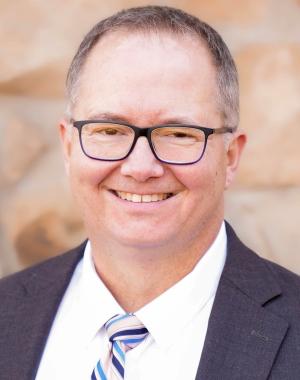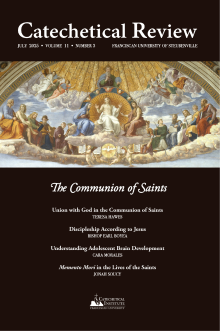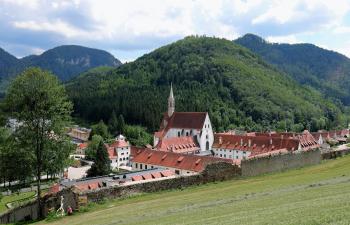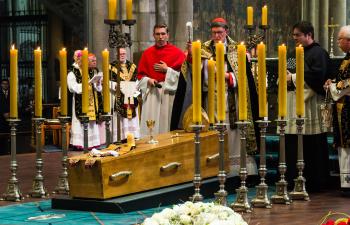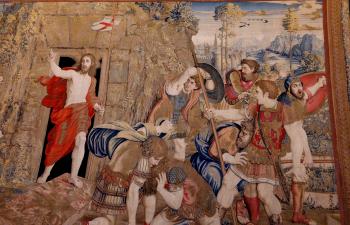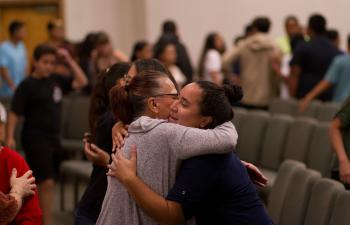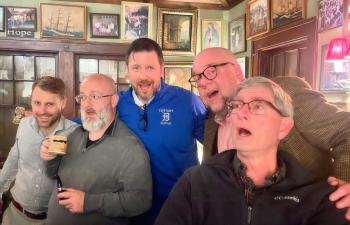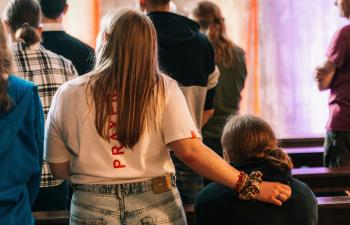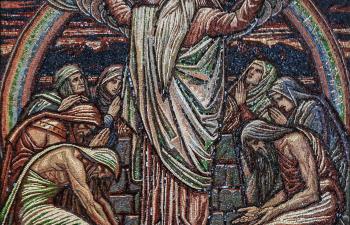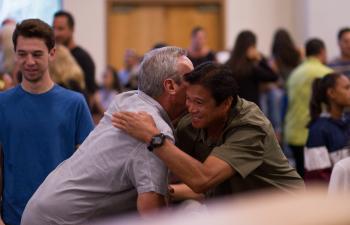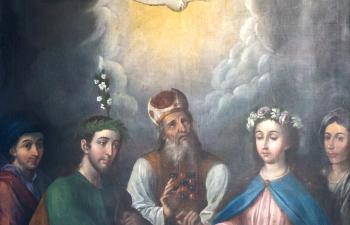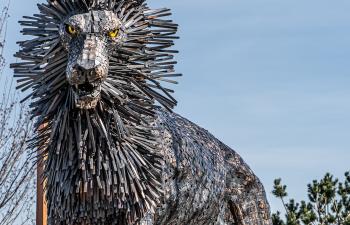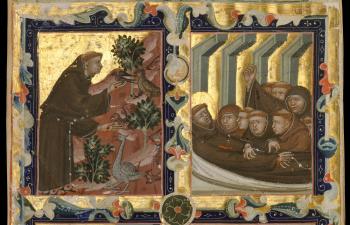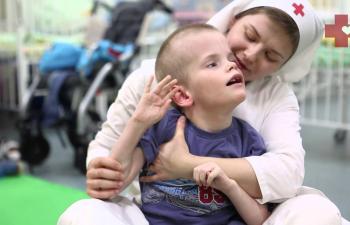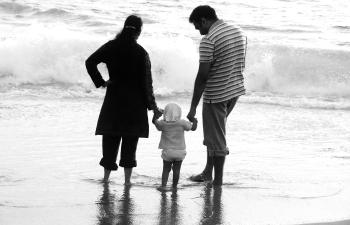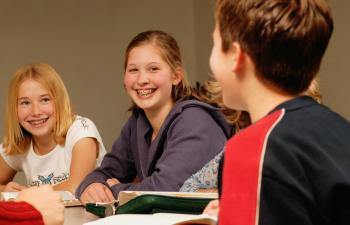 This past semester, I had the joy of bringing my family to Franciscan University of Steubenville’s Austrian campus, where I taught for the spring. One of the most compelling facets of this experience was our immersion in the lives of many saints as they may be met in various places around the European continent. That, of course, is the extraordinary thing about the saints—they may be encountered in the most tangible of ways by visiting their cities, their graves, and even (in the case of Pope St. John Paul II) their favorite ice cream shops. Their homes are sometimes preserved, as are occasionally their actual bodies in a miraculous way. Over the course of this semester in Austria, I was deeply stirred in my own encounters with the Church Triumphant in these holy places. Allow me to offer three examples.
This past semester, I had the joy of bringing my family to Franciscan University of Steubenville’s Austrian campus, where I taught for the spring. One of the most compelling facets of this experience was our immersion in the lives of many saints as they may be met in various places around the European continent. That, of course, is the extraordinary thing about the saints—they may be encountered in the most tangible of ways by visiting their cities, their graves, and even (in the case of Pope St. John Paul II) their favorite ice cream shops. Their homes are sometimes preserved, as are occasionally their actual bodies in a miraculous way. Over the course of this semester in Austria, I was deeply stirred in my own encounters with the Church Triumphant in these holy places. Allow me to offer three examples.
First, I had quite an astonishing run-in with divine providence in Rome. I had recently read about a remarkable recently beatified woman: Bl. Elisabetta Canori Mora. Born in the 18th century, Elisabetta had fallen in love with a young lawyer and joyfully married him. Then, almost immediately, her husband chose to be serially unfaithful to her. He soon gambled away the young family’s living in a life of self-absorbed debauchery. Hoping for a beautiful marriage and family life, Elisabetta instead found herself unloved and disrespected and very much alone. Her reaction to this terrible situation was profound. The book I had been reading described her response in this way:
Drawing strength from intense prayer and from the conviction that the sacrament of matrimony had truly bound them together in a precious and indissoluble way, Elisabetta resolved on total fidelity to her husband and their two daughters, whom she supported laboriously by her own work. She honored the sacrament she had received, although she was forced to do so alone, venturing onto a “mystical” terrain made of inexhaustible charity, aid for other families in difficulty, the attentive upbringing of her own daughters, and getting to know Jesus her Bridegroom, who assisted her with miracles of love.[1]
When I was walking the streets of Rome, I suddenly remembered her, wondering where in Italy she had lived. A moment’s research relayed to me the astonishing fact that she had actually lived in Rome and her body was buried not a mile away from where I stood. She was here! In amazement, I walked to her church and knelt at her grave, asking her intercession for my own marriage and those of my loved ones. Being in that church was a way to draw close to her. It was an experience both consoling and inspiring.
A second compelling experience occurred when our students made a pilgrimage to Poland and two places dear to the heart of St. John Paul II: Częstochowa and Kraków. The witness and writings of this man have been deeply formative for me for all of my adult life. He is, of course, not buried in Kraków. But this was his city. This was the city where he and his father lived when the Nazis invaded Poland and where he lived all through the Communist occupation after the Second World War. It was also the diocese where he studied secretly in the underground seminary, where he was ordained a priest and consecrated a bishop. And then, of course, he became the first Polish pope—an event of such national pride that most of us non-Polish people will never adequately understand its impact for them. He was a world leader from a repeatedly oppressed country who played a pivotal role in the fall of Communism.
As I walked the cobblestone streets, I was aware that he had traversed these same streets many times.[2] I felt a closeness to him in his city, most especially when I walked to the great Wawel Cathedral. This was the actual church where he had been serving Mass on the day Poland was invaded and World War II began, where he was ordained, where he served as auxiliary bishop and then archbishop. How many hours had he spent in this sacred place, gazing up at the stained glass windows and the statues, and out to his beloved Polish people? Behind the altar and sanctuary of this church was the cathedral’s Blessed Sacrament chapel. It is small and intimate, with an icon of Our Lady of Częstochowa to the side. As I entered, I saw against the back wall of the chapel a great marble seat, where Karol Wojtyła must have spent many hours in prayer. Seeing no obstruction, I went to this chair and sat in it, contemplating the Marian icon and especially Jesus in the Tabernacle. How many times had this great and holy man sat in this seat, turning his sometimes deeply troubled heart to the God of all peace and understanding? Sitting in this place, I felt a closeness and kinship with him and asked him to pray for me, for the people I hold dear, for the Church, and for my students.
A final experience which impacted me: I was invited to give two addresses in Lithuania, an experience I will not soon forget. While there, my family was able to visit the Hill of Crosses. It has been an important Catholic pilgrimage site since the 19th century, a place where Lithuanians would pray and leave behind wooden crosses on the hill. In the 20th century, the influence of this place grew, with many thousands coming to pray and leave behind a cross. When the Soviets occupied Lithuania, they bulldozed the hill, built a fence around it, and stationed armed guards to keep people away. And still, under the cover of darkness, brave Lithuanians would evade the sentries, jump the fence, and leave their crosses. Today, with well over a million planted crosses (including one by the Pauley family), this is a deeply sacred place. It is so because of how profoundly the Catholic faith is embodied here, but also because it expresses the freedom of the Lithuanian spirit, which remained unconquered through a long period of violent oppression and tyranny. The hill is a place where faith and freedom are vividly displayed—to God and to anyone who makes a pilgrimage today.
Deeply impressed upon me over those months in Europe was how incarnational our Catholic faith is. The Christian life is not some ethereal, intangible, spiritual ideal. Our Catholic faith is visible, touchable, indeed accessible to all our senses, human creatures that we are. The life of Jesus may be spiritually and physically encountered in these places through the lives of his saints, through whom the Gospel has been magnificently inculturated. The saints are indeed God’s masterpieces of inculturation, displaying in every time and place what it looks like to live in the life and love of the Blessed Trinity. Encountering the Church Triumphant so tangibly helps us to envision what we ourselves could one day be as a result of our communion with God in Christ.
[1] Antonio Maria Sicari, How Saints Die: 100 Stories of Hope (Ignatius Press, 2021) 203
[2] Indeed, when the Polish pope came to Kraków in 1979, he mentioned his great love for the city: “I wish to give one more look at Kraków, this Kraków in which every stone and every brick is dear to me.” St. John Paul II, Homily at the Mass in Honor of St. Stanislaus, Kraków, June 10, 1979.
Art Credit: Photos by Dr. James Pauley: Shrine of Bl. Elisabetta Canori Mora in San Carlo alle Quattro Fontane church in Rome.
This article originally appeared on pages 4 - 8 of the print edition.
This article is from The Catechetical Review (Online Edition ISSN 2379-6324) and may be copied for catechetical purposes only. It may not be reprinted in another published work without the permission of The Catechetical Review by contacting [email protected]


